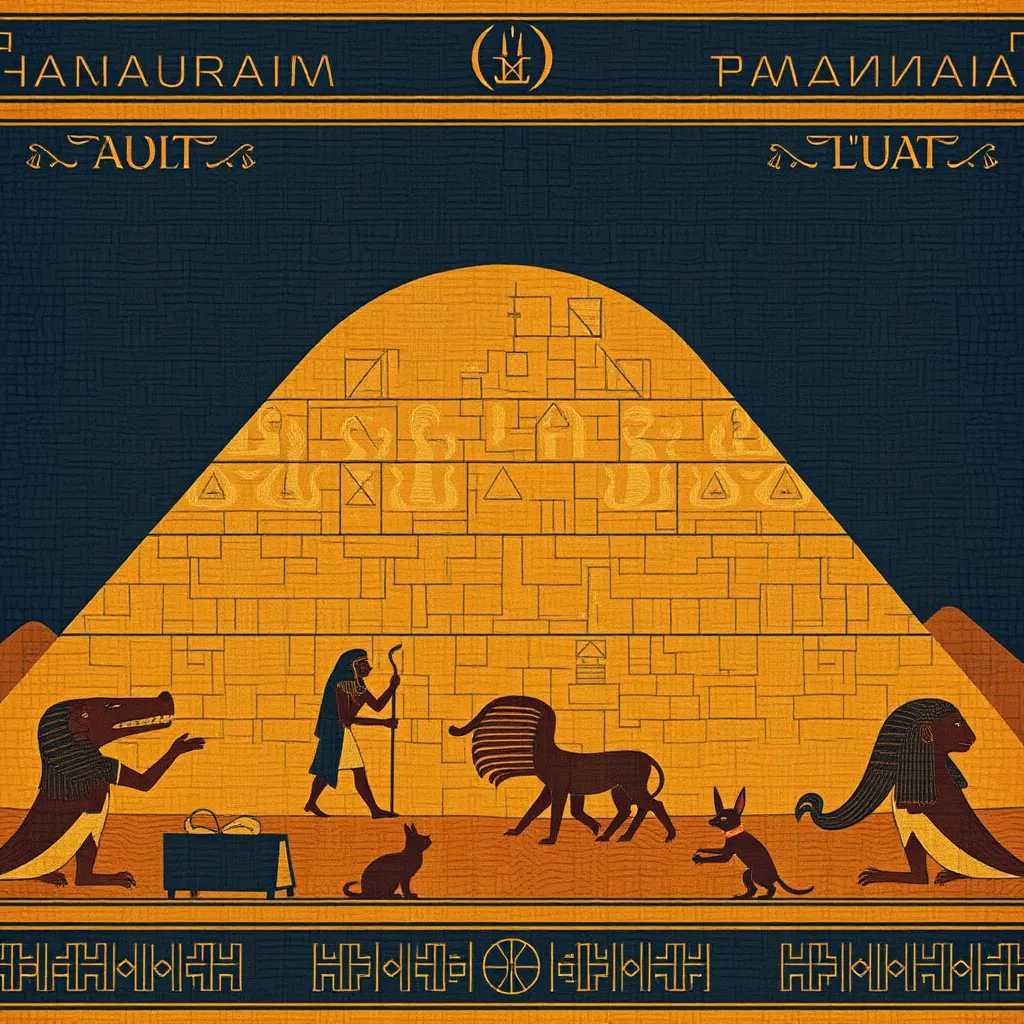The Duat: A Tapestry of Myths and Legends
I. Introduction to the Duat
The Duat, in ancient Egyptian beliefs, is the realm of the dead, a complex landscape that serves as a bridge between the world of the living and the afterlife. It is a significant aspect of Egyptian mythology, representing not only the destination of souls after death but also the trials and transformations they must undergo. The journey through the Duat is a central theme in many Egyptian texts and rituals, emphasizing the importance of this mystical place in the lives of the ancient Egyptians.
This article aims to explore the multifaceted nature of the Duat, examining its historical context, geographical characteristics, deities, myths, rituals, and its influence on modern culture.
II. Historical Context of the Duat
The concept of the Duat emerged in ancient Egyptian religion as early as the Old Kingdom (c. 2686–2181 BCE). Initially depicted as a shadowy underworld, the Duat evolved over time, becoming a more structured and complex realm in which the souls of the deceased navigated various challenges and encounters.
Throughout different dynasties, the understanding of the Duat transformed significantly:
- Old Kingdom: The Duat is primarily a place of darkness and chaos, where the dead encounter various trials.
- Middle Kingdom: A more defined geography emerges, with specific locations within the Duat becoming recognized as significant.
- New Kingdom: The Duat is depicted with rich symbolism, and the role of deities becomes more pronounced in the journey of the soul.
The Duat’s influence extended beyond spiritual beliefs; it shaped Egyptian culture, art, and government. The reverence for the afterlife and the Duat prompted elaborate funerary practices, tomb construction, and a rich tradition of afterlife literature.
III. The Geography of the Duat
The Duat is often described as a vast and intricate landscape filled with various realms, each representing different stages or challenges faced by the deceased. Notable locations include:
- The Field of Reeds: A paradise-like area where souls who have lived justly enjoy eternal bliss.
- The Hall of Judgement: The place where the dead are judged by Osiris; their hearts are weighed against the feather of Ma’at.
- The Lake of Fire: A terrifying place for the souls deemed unworthy, where they face punishment.
The geography of the Duat is not merely physical; it is steeped in symbolism. For instance, the Field of Reeds represents the perfect afterlife, mirroring the fertile banks of the Nile, while the Hall of Judgement reflects the moral order that governed Egyptian society.
The relationship between the Duat and the physical world is profound, as the ancient Egyptians believed that the Duat was located beneath the earth, accessible only through the tombs of the deceased. This connection highlights the cyclical nature of life and death in Egyptian thought.
IV. Deities and Entities of the Duat
The Duat is populated by numerous deities and entities, each playing a critical role in the afterlife journey:
- Osiris: The god of the afterlife, resurrection, and agriculture, Osiris presides over the Duat and judges the souls of the deceased.
- Anubis: The god of mummification and the protector of graves, Anubis guides souls through the Duat and ensures their safe passage.
- Horus: Often associated with kingship and the sky, Horus is involved in the resurrection of Osiris and the protection of the deceased.
Additionally, the Duat is inhabited by various spirits, demons, and creatures, such as the serpent Apophis, who represents chaos and must be defeated to ensure the soul’s safe passage.
V. Myths and Stories from the Duat
Prominent myths involving the Duat reveal the beliefs and values of ancient Egyptian society. One of the most significant is the story of Osiris, who is murdered by his brother Set and subsequently resurrected by his wife, Isis. This myth encapsulates themes of death, rebirth, and the eternal struggle between order and chaos.
Another crucial narrative is the journey of the soul through the Duat. Upon death, the soul embarks on a perilous journey, facing various challenges, including encounters with gods and monsters. The successful navigation of the Duat leads to the afterlife, while failure results in eternal damnation.
VI. Rituals and Practices Related to the Duat
Funerary practices in ancient Egypt were deeply intertwined with beliefs about the Duat. The preparation of the deceased involved mummification and the placement of grave goods to ensure a safe journey. Specific rituals included:
- Waking the Dead: A ceremony to invoke the spirit of the deceased.
- Offering Rituals: Providing food and items believed to be necessary for the afterlife.
Texts such as the “Book of the Dead” contained spells and guidelines for navigating the Duat, emphasizing the importance of ritual knowledge. These texts were often placed in tombs to assist the deceased in their journey.
VII. The Duat in Modern Culture
The influence of the Duat extends into contemporary literature and art, where it serves as a source of inspiration for authors and artists alike. The portrayal of the Duat in modern works often reflects themes of mortality and the afterlife.
In film and popular media, the Duat has been depicted in various forms, showcasing its rich mythology. Movies exploring ancient cultures frequently reference the Duat, highlighting its enduring fascination.
Furthermore, there has been a resurgence of interest in ancient Egyptian mythology, with modern audiences seeking to understand the complexities of the Duat and its implications for life and death.
VIII. Conclusion
In summary, the Duat holds a central place in ancient Egyptian culture, symbolizing the journey of the soul after death and the complex relationship between life and the afterlife. Its significance is evident in the rituals, myths, and artistic expressions of the time.
The legacy of the Duat continues to captivate modern audiences, inviting further exploration of Egyptian mythology and the profound questions surrounding existence and the afterlife. As we delve deeper into these ancient beliefs, we uncover timeless themes that resonate across cultures and eras.




